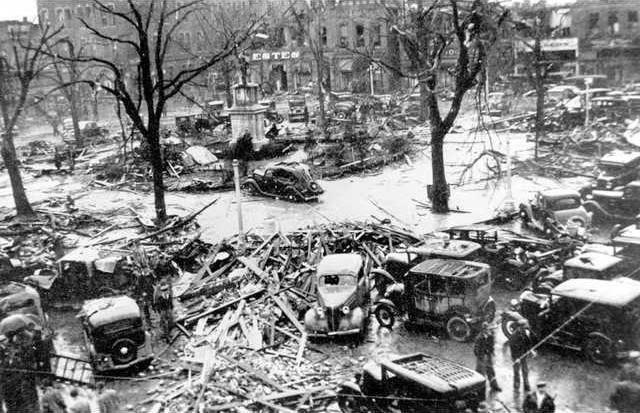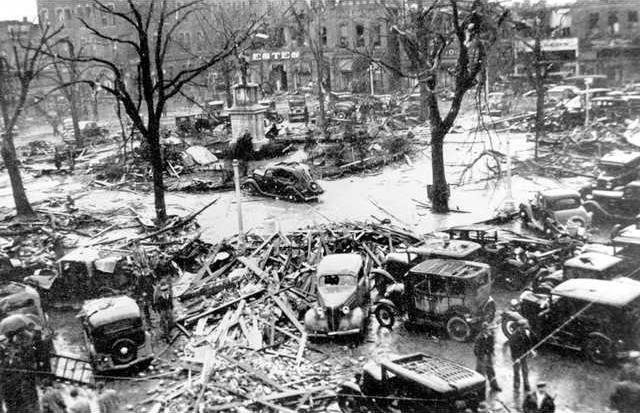Growing up in Gainesville, Dawn Parks had heard about how the Tornado of ’36 devastated downtown.
But she hadn’t heard that her gift shop, Upsy Daisy Boutique, is in a two-story brick building that, for the most part, was spared the same kind of damage inflicted on other stores in the Gainesville square.
In fact, it is one of the remaining downtown structures that retained its original façade after the storm.
“That’s awesome,” Parks said.
And just like her customers who frequently share stories about the Washington Street store’s historic past, the city can’t shake memories of the April 6, 1936 storm, which The Weather Channel recently dubbed as the U.S.’s sixth-worst tornado.
Gainesville Mayor Danny Dunagan has asked that all city flags be lowered to half-staff from 8 a.m. to sunset Wednesday in memory of the more than 200 people killed by the tornado.
In addition to the death toll, the storm also injured some 1,600 people and caused, in a figure adjusted to modern dollars, $1.3 billion in damage.
See The Times' 75th anniversary coverage of the tornado.
And 40 people were never found and are officially deemed as missing, according to The Weather Channel.
“Buildings damaged to any extent were torn down,” local architect Garland Reynolds said.
The early 20th-century Jackson Building, also on Washington Street, and the building housing Upsy Daisy are a couple of exceptions.
“Everything else has been totally changed and redone,” Reynolds said.
Main Street used to feature a row of buildings where the downtown parking garage now sits.
Reynolds’ father was a butcher who worked downtown when the tornado struck.
“He always talked about hearing (what sounded like) a freight train coming up the road,” he said. “About that time, everything started falling in and he dived under a meat block, and the ceiling came down.”
A few years ago, Reynolds helped lead an effort to get a historic marker placed at the site of the Cooper Pants Factory, where a fire broke out during the tornado and killed 75 people.
In October 2014, Gainesville and Georgia Historical Society officials unveiled the marker at the corner of Maple and Broad streets.
For tornado survivor Claude Williams, memories are of that day are still vivid.
If a walking companion had been ready to go with him to Gainesville High School that morning, “we would have walked right into the teeth of the storm … and we would have more than likely been injured or killed,” said the 93-year-old Williams, now an Athens resident.
As he stopped at the friend’s house, Williams ended up hurrying into the basement with the friend and the friend’s mother.
About that time, “a big tree blew over on their front porch,” Williams said.
He also recalled seeing a man who, moments before the tornado, had been working in the yard of a church. After the storm had passed and he emerged from the basement, Williams learned the man had been killed.
“I was the last one to see him,” he said.
Williams shared many other details of those dark days, including how the city lay in ruins and, for him, how one truth still stands.
“We were fortunate to survive,” he said.

